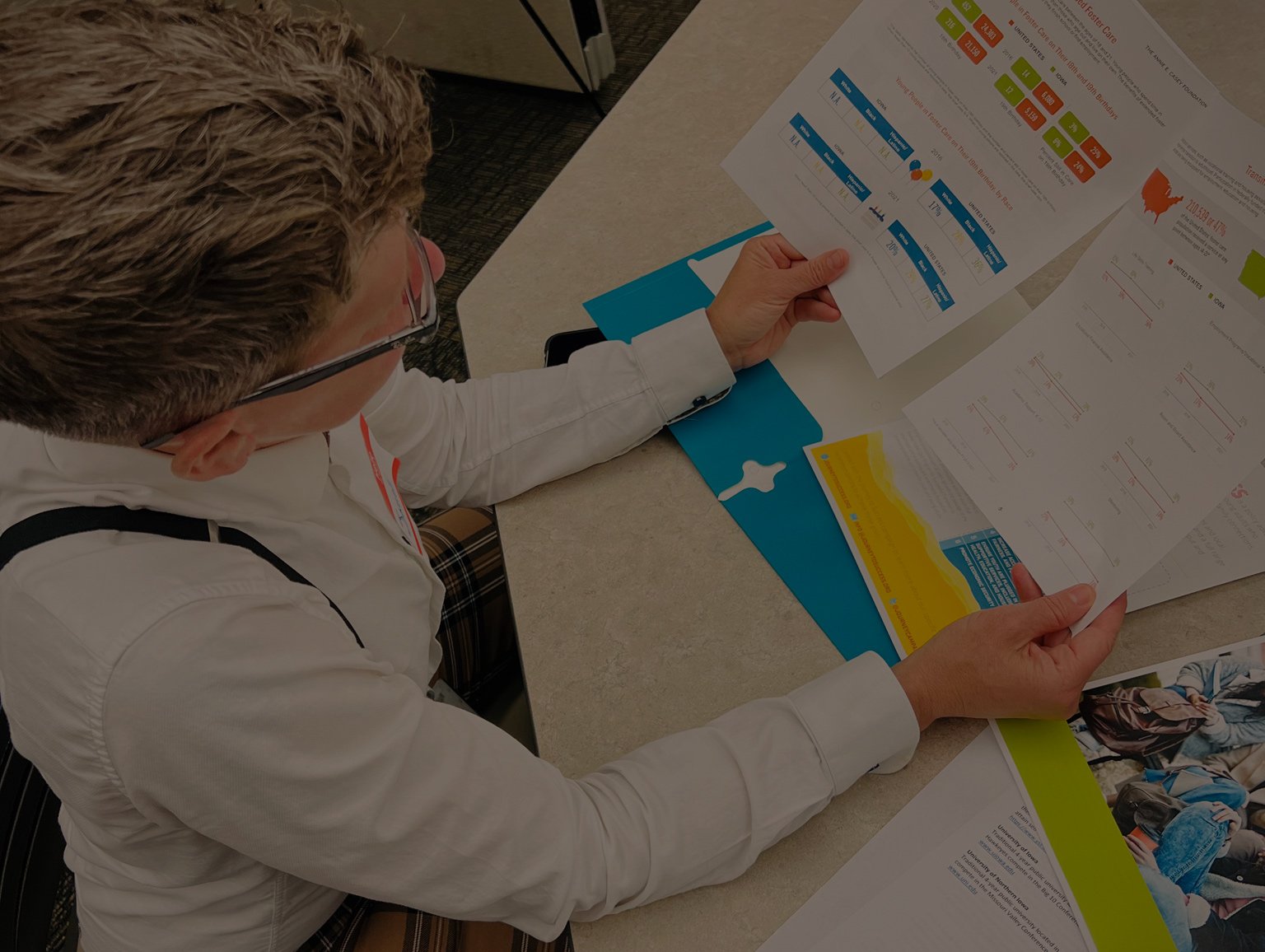A behind-the-scenes playbook to guide foster care advocacy on Capitol Hill
Part 3:
The Budget Process / We Value What We Pay For
THE SHORT VERSION: The federal government has one major lever to impact policy. It can increase spending on policies, or it can cut spending. Ready to learn more? Let’s dive in…
The Basics
There are three important ways the federal government provides resources to support policy priorities:
discretionary spending
Subject to an annual appropriation, this bucket of bills includes spending on hot topic issues like education and defense.
FOSTER CARE ADVOCACY SPOTLIGHT:
One key discretionary program is the Education and Training Vouchers (ETV) Program, which helps pay for college and career training for transition age youth (TAY). Because Congress decides how much to spend on discretionary programs like ETVs every year, it’s especially important that federal lawmakers continue to hear from advocates who support them.
Mandatory spending
NOT subject to an annual appropriation, this bucket of bills includes many of the social safety net programs.
FOSTER CARE ADVOCACY SPOTLIGHT:
Foster care funding for certain low-income families and funding for the Chafee programs are both examples of mandatory spending. TAY need more funding and flexibility through programs like these.
The Tax Code
Our tax code can be used to support policy priorities such as providing working families with tax relief through the Earned Income Tax Credit (EITC).
FOSTER CARE ADVOCACY SPOTLIGHT:
If EITC was permanently extended to TAY, it could help with housing and other living expenses.

HOW IT WORKS
Working off the budget resolution, the appropriations committees begin their work. There are 12 appropriations subcommittees. Work on the appropriations process must be completed by September 30, the end of the fiscal year. Often, the appropriations process reaches a stalemate and it is not completed in time. In these cases, Congress focuses on passing a continuing resolution (CR). CRs are routinely needed to continue to fund the government.
After the president delivers the State of the Union address, he submits a budget proposal to Congress.
The president’s budget identifies priorities by:
Outlining federal policy on entitlement spending and tax policy; and
Proposing spending on major expenditure categories like defense, transportation, and education. It also proposes spending for child welfare and foster care.
The Congressional Budget Office (CBO) analyzes the president’s budget to determine how the proposal would impact our country’s overall spending or savings.
Congressional committees hold hearings to take a closer look at the president’s budget.
The House and Senate Budget Committees each propose a budget resolution that sets targets for the authorizing committees. A consolidated budget resolution must be agreed to by both the House and the Senate but does not need to be signed by the president. (Interested in the complex federal budget rules? You’ll love this report on the budget process by the Congressional Research Service.)
Sometimes the budget committees will identify policies that need to be addressed during a process called “reconciliation.” A reconciliation bill makes changes to mandatory spending programs such as the permanent funding stream for foster care. Reconciliation typically occurs when one political party controls both Congress and the White House. (The reconciliation process involves a complex set of rules. You can learn more about those here.)
take action!
Review the president’s budget.
Tell your representatives what you think will help youth in foster care—and what doesn’t help!
Be sure to check out Part 2 of our Insider’s Guide for information on how to find and contact your senators and members of Congress.
Monitor congressional action.
Tune in! All committees have websites where hearings will be announced and can be viewed.
Many congressional offices are now on social media so you can follow that way, too. Below, you’ll find links for the key committees for foster care policy:
Encourage members of Congress to speak to the need for improvements to foster care.
Submit your story “for the (Congressional) Record!”
The budget process has its own (kind of weird) language.
PAYGO: The requirement that new spending must be “offset” by spending cuts
SCORE: The budget analysis from CBO
DNRF: Deficit-neutral reserve fund - often used to identify a policy that the authorizing committees intends to focus on
POO: Point of order – this can be raised if a policy violates some aspect of the budget resolution
BYRD BATH: A process – named for the longest-serving senator is U.S. history, Robert Byrd – by which non-budgetary policies are stripped out of a reconciliation package
BYRD DROPPINGS: Items dropped as a result of the “Byrd bath”
VOTE-A-RAMA: A process where any member can offer an amendment to the budget bill. Often the vote-a-rama will extend for hours, streamed live on C-SPAN!

THE BOTTOM LINE
The budget process can seem kind of scary, but it’s really just a different kind of opportunity to have your voice heard. Ultimately, budgets are political documents, and it’s up to you to make sure that your tax dollars are being spent to make substantive change for youth in care.










